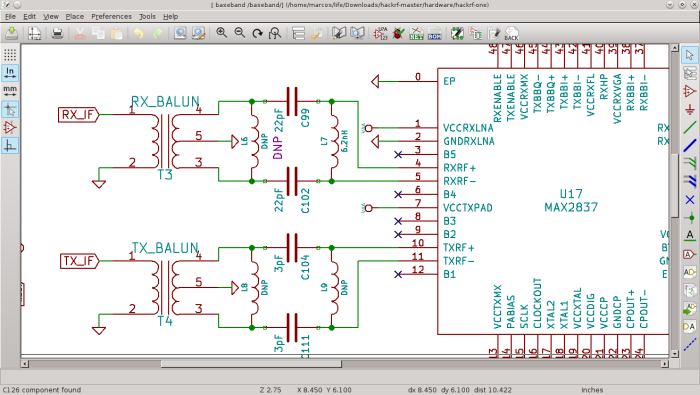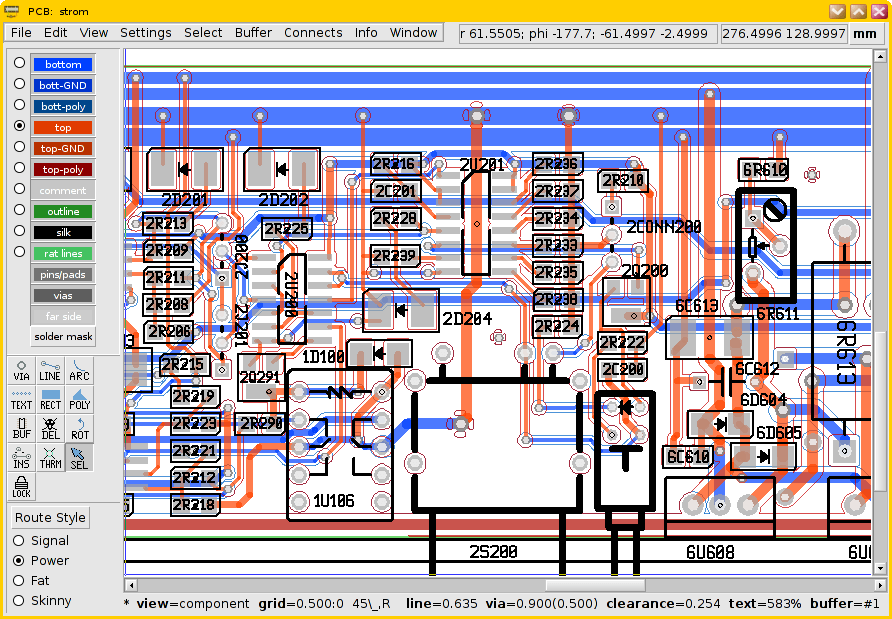Last Updated on April 16, 2022
Autodesk, Inc. is an American multinational software company that makes software products and services for the architecture, engineering, construction, product design, manufacturing, media, education, and entertainment industries. It bills itself as a “… leader in 3D design, engineering and entertainment software”.
The company was founded in 1982 by John Walker, who was a joint developer of the first versions of AutoCAD, the company’s best known software application. Autodesk is listed on the Nasdaq stock exchange, it has over 11,000 employees, and is headquartered in the San Francisco Bay Area.
While Autodesk develops many high quality applications they are proprietary software. And the vast majority of their products are not available for Linux. This series looks at the best free and open source alternatives.
![]() EAGLE is a scriptable electronic design automation (EDA) application with schematic capture, printed circuit board (PCB) layout, auto-router and computer-aided manufacturing (CAM) features.
EAGLE is a scriptable electronic design automation (EDA) application with schematic capture, printed circuit board (PCB) layout, auto-router and computer-aided manufacturing (CAM) features.
EAGLE is available for Linux but it’s proprietary software. What are the best free and open source alternatives?
1. KiCad
KiCad is a suite for the creation of electronic schematics. It helps design of schematics for electronic circuits and their conversion to PCBs (printed circuit board) design. KiCad uses an integrated environment for all of the stages of the design process: Schematic Capture, PCB layout, Gerber file generation/visualization and library editing.

2. gEDA
The gEDA project has produced and continues with the development of a comprehensive open source suite and toolkit of Electronic Design Automation tools.
These tools are used for electrical circuit design, schematic capture, simulation, prototyping, and production. Currently, the gEDA project offers a mature suite of free software applications for electronics design, including schematic capture, attribute management, bill of materials (BOM) generation, netlisting into over 20 netlist formats, analog and digital simulation, and printed circuit board (PCB) layout.

| Alternatives to Autodesk's Products | |
|---|---|
| 3ds Max is a 3D computer graphics program for making 3D animations, models, games and images. | |
| Arnold is software for rendering three-dimensional, computer-generated scenes using unbiased, physically-based, Monte Carlo path tracing techniques. | |
| AutoCAD is computer-aided design (CAD) and drafting software. It's used in industry, by architects, project managers, engineers, graphic designers, city planners and others. | |
| EAGLE is a scriptable electronic design automation (EDA) application with schematic capture, printed circuit board (PCB) layout, auto-router and computer-aided manufacturing (CAM) features. | |
| Flame is 3D visual effects (VFX), finishing, and color grading software. It includes AI-powered tools and remote solutions. | |
| Maya creates assets for interactive 3D applications (including video games), animated films, TV series, and visual effects. | |
| MotionBuilder is 3D character animation software. The software is designed for virtual cinematography, motion capture, and traditional keyframe animation. Capture, edit, and play back complex animations. | |
| Mudbox is 3D digital painting and sculpting software. Sculpt and paint highly detailed 3D geometry and textures. | |
| ReCap lets you create rich and accurate digital models of existing conditions. Capture high-quality, detailed models of real-world assets. | |
| ShotGrid is project management software used for visual effects and animation project management in television shows and movie production and video game development. | |
| Sketchbook is a raster graphics software app intended for expressive drawing and concept sketching. It's also useful for making animations. | |
| Tinkercad is an online 3D modeling program that runs in a web browser. Tinkercad uses a simplified constructive solid geometry method of constructing models. | |

Thanks. We’re keen on replacing proprietary software. Too many times we’ve been locked into a proprietary solution with software companies ramping up the fees over time. The best solution is to bring things in-house, use open source software as the core and develop custom in-house modifications.
Exactly. Open source has the big virtue that we can modify the source to suit our needs and no one stops anyone from doing the same.